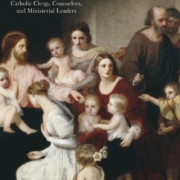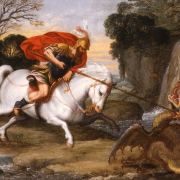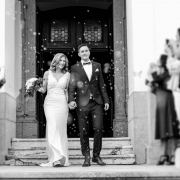The Ocean of Emotions
Have you ever been to the ocean? If not, you should go – at least once in your life. I am a little biased. I grew up in Rhode Island, better known as the Ocean State. I cannot help but appreciate the beauty and raw power of the ocean and I think it’s a great metaphor for emotional experience. Emotions are messy, fluid, and difficult to contain. Sometimes we can feel overwhelmed, like we’re drowning, struggling to keep a head above water. They can be exhilarating and equally terrifying. [Yes, I am using emotional terms to describe emotional experiences because we often have feelings about our feelings!] I use this metaphor a lot in my therapy sessions. So much so, that a former patient gave me a “Lifeguard on Duty” sign.
When I was a kid, I used to love swimming with my grandfather. He would take us to the beach and there would be that special moment when he stood up from his chair and you knew he was going in, and you wanted to go in with him. All the grandkids scrambled after him into the waves. Rhode Island beaches are hardly tropical and calm. The northeast Atlantic is cold and a bit rough around the edges (much like the people). Big waves crash on a rocky coast bringing in seaweed and stirring up pebbles. It is kind of turbulent where the water meets the shore. You have to put up with a lot to get to the good part. I have so many memories of squeamishly wading through rough, shockingly cold water, stepping on jagged shells, and having my ankles tangled in slimy seaweed. But once you get past the shoreline, the sand softens, the waves turn into swells, the water is clear, and by this point you’ve gotten used to the cold temperatures. My grandfather taught us how to float. He would lay back as if sitting in a lazy boy recliner, put his arms out to the side, and cross his ankles at the water’s surface. In this position, on a clear sunny day, you could just float over the ocean swells and enjoy its movement.
Getting in contact with your emotions can be a similar experience. In order to feel your feelings, you have to tolerate a bit of discomfort. This is known as “distress tolerance.” If you do not have a lot of distress tolerance, it means that you might judge those waves crashing on the shore as more harmful than they really are. If your distress tolerance is too high, you might go swimming in dangerous conditions! Lifeguards assess the conditions and let you know if it’s safe to swim. There are times when it is not appropriate to go in the water, and that’s okay! During stressful times in life, it may not be safe to open ourselves up to intense emotions if they would be destabilizing. There are other times when it would be great to go for a swim, but you just don’t want to get wet. External and internal conditions can cue us as to whether it is a good time to allow ourselves to feel our feelings. Becoming attuned to our physical bodies and more aware of our emotions gives us the ability to decide how we will act based on our feelings. This gives us the choice to stay on the blanket, go in the water, or just stay home!
So, I want to invite you to explore your relationship to the ocean. How would you describe the conditions of your emotional life? Is it stormy? Calm? What does a day at the beach look like for you? Using this metaphor can help bring understanding to how you relate to your emotions with the goal of learning to swim safely in these waters. Maybe you stay on the shore and watch the water from a distance, maybe you dive in headfirst and get overwhelmed. The goal is to develop a relationship with your emotions that is neither too distant, that you never swim, nor too overwhelmed, that you immediately feel like you’re drowning, but you are able to endure the discomfort of the crashing waves just long enough to move past them and enjoy the water.









